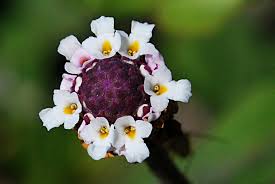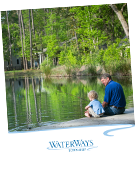Here at WaterWays, we live by the philosophy and commitment to preserving and enhancing the native vegetation that exists here in the community. There's really nothing like the breathtaking low country backdrop of Spanish moss dangling over 100-year-old live oaks right in your back yard.
If you're looking to try something new for your fall landscape, take our commitment a step further – why not go vintage with a Georgia native plant? Integrating a diverse and regionally appropriate native plant into your new or existing home landscape can help conserve the natural resources within your region, including water and animal habitats. Here are a few more reasons why we think you should:
- The conditions are perfect – A species is considered a native plant if it was growing in the region prior to 1513. So for more than 500 years, these plants have adapted to the environment and its particular combinations of soil, temperature, nutrients, and rainfall of their region. Many times, these plants require little, if any, additional help growing. That means less time doing yard work – watering, fertilizing and adding pesticides.
- Saves you money and health – By using native plants, you are cutting down the use of chemicals, providing ecological and human health benefits to the surrounding area. They can also provide economic benefits through reduced energy costs, water and maintenance.
- Protects the wildlife – Native plants are inherently attractive to wildlife. By using native plants in your landscape, you are helping to re-establish the plants that originally grew in your region and provide the habitat that wildlife have evolved to depend on for survival. With the right diversity of native plants in your landscape, you can attract and provide food, nesting, and shelter for birds and beneficial insects.
- Limits invasive species – Incorporating more native plant species into your yard can help limit the chances that potentially invasive, exotic plant species will be introduced into the natural environment – making it free range for more natural species to grow.
Want to learn more about the native plants in Bryan County? Visit the CoastScapes website for a list of native plants near you. Learn which plants are best for your yard and help make the region a sustainable habitat for years to come.





